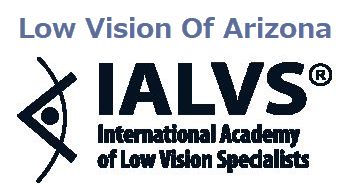 If you’ve been diagnosed with low vision, you may be worried about banging into the furniture or falling down the stairs. These simple modifications will help you stay safe at home, even with limited vision.
If you’ve been diagnosed with low vision, you may be worried about banging into the furniture or falling down the stairs. These simple modifications will help you stay safe at home, even with limited vision.
What is Low Vision?
Low Vision refers to significant visual impairment that can't be fully corrected with conventional glasses, contact lenses, medication or eye surgery. The condition impacts nearly 250 million people worldwide, and 7% of all people over age 65. The most common symptoms of low vision are:
- Blurred vision
- Blind spots
- Tunnel vision
- Poor night vision
The condition is often the result of eye diseases such as glaucoma, macular degeneration and diabetic retinopathy. Low vision can also result from congenital conditions, eye injuries and stroke.
Although vision loss can’t be reversed, adjustments in your home can help you remain active, independent and safe.
5 Ways Low Vision Patients Can Stay Safe at Home
Get [Organized]
It’s time to organize your home. Remove things you don’t need and anything that can impede your mobility around the house.
- Get rid of loose area rugs
- Make sure your carpet is completely fastened to the floor
- Use zip ties and other fasteners to keep long cords out of the way
- Confine small stools or tiny tables to areas where you don’t walk
Become a master [organizer]. Be sure to put kitchen utensils, tools and other items in separate drawers and containers. Organize clothing in your closet by color, coats from light to heavy and shoes by season.
Label Everything
Having a place for everything is key. Once you’ve decided where everything should be, the next step is labeling your belongings. Use large letters and dark ink against light-colored paper, or brightly colored labels to differentiate between items.
Go for Contrast
Using contrasting colors is an easy way to make items stand out. If your couch is dark, place light-colored pillows at each end so you can see where to sit. Place fluorescent strips on dark stairs or dark strips on light stairs so you can step safely.
Lighten Up
Lighting your home properly can make a huge difference in your ability to see things and live safely, especially in places like the kitchen. You can add more brightness by:
- Installing lighting in closets and under cabinets
- Choosing bulbs with higher wattage
- Using lights during the day to reduce glare
- Try different types of lighting to see what helps you maximize your vision
Use Low Vision Aids and Devices
Your Low Vision Optometrist may prescribe low vision glasses and devices to enable you to see better and by helping you maximize your remaining vision. These include:
- Telescopes – hand-held, spectacle-mounted and clip-on
- Magnifiers – hand-held and standing
- Non-optical visual aids – devices that increase light and enhance contrast
- Computer-based aids – use software and large screens
- Mobile phone applications – allow easier communication
Discuss this with your eye doctor to see which types of visual aids are best for you. Many people with low vision use several types of visual aids for specific activities — for instance, magnifiers for reading and additional lighting for preparing food.
Make the most of the internet with voice search features. This is particularly helpful if you quickly need emergency numbers or need to locate other information.
Smart technology has revolutionized life for people with low vision. Voice-activated features let you turn lights on and off, open and close your garage doors and contact emergency services immediately.
Talk to Us for Assistance with Low Vision
Need answers for living safely and comfortably at home with low vision? We’ll advise you on how to maintain your independence and recommend the best visual aids for your individual lifestyle and needs. We’ll help you maximize your remaining vision so you can continue to do the things you love. Schedule an appointment with Dr. Paul Woolf at Low Vision of Arizona in Gilbert today.
Our practice serves patients from Gilbert, Mesa, Phoenix, and Chandler, Arizona and surrounding communities.
Q: What is the difference between low vision and legal blindness?
- A: Legal blindness is a legal term that refers to corrected visual acuity of 20/200 or less in the better eye or a visual field of 20 degrees or less. A person with low vision is someone who has permanent vision loss and cannot do those tasks they wish to do.
Q: Who is at risk for low vision?
- A: People with the highest risk for low vision are typically over 65 and have a family history of AMD. For some reason, AMD affects women more than me, and Caucasians/Asians more than African Americans. Similarly, diabetic retinopathy and glaucoma also cause vision loss and tend to be more prevalent among African Americans.
